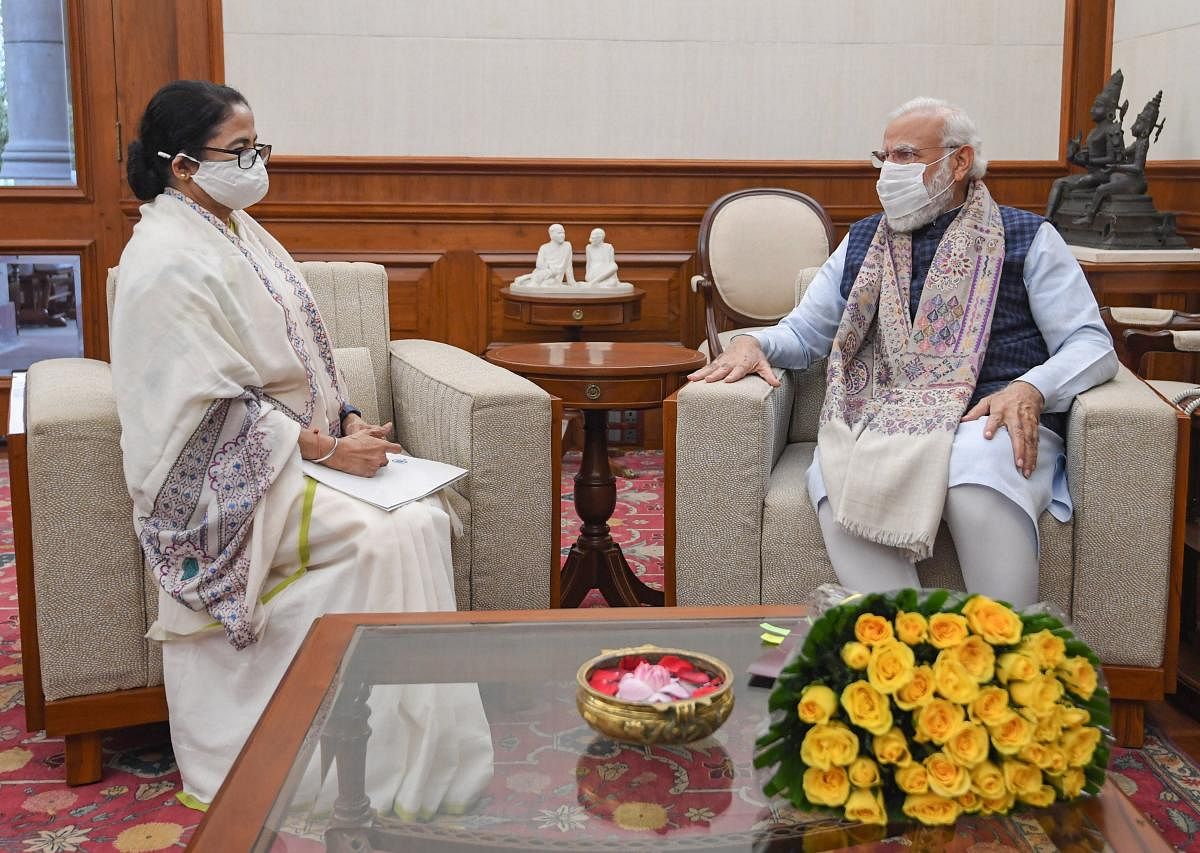
In West Bengal, a political duopoly has emerged, with the BJP short on numbers to be able to topple Trinamool out of power. All other political players in the state have been diminished into near irrelvance -- their numbers decimated and their roles restricted to routine protests that often go unnoticed and are inconsequential.
The ruling Trinamool Congress, with around 48% vote share (Assembly elections, 2021), and the BJP with 38%, now dominate the state’s political space. The TMC has 2.7 seats in the Assembly for every seat that the BJP holds. Additionally, there are political defections in Trinamool’s favour.
The Trinamool Congress has improved its performance since the 2019 Lok Sabha elections, when the BJP won 18 against TMC’s 22 seats. The 2021 Assembly elections, however, saw the BJP rise as the sole Opposition in Bengal, with the Left parties and Congress failing to score.
After the 2021 elections, the Trinamool Congress indicated its intent to expand to a national presence. First, ignoring the Congress’ status as the national Opposition, Trinamool floated the idea of a new coalition, with Mamata Banerjee playing the pivotal role in it. Second, the party contested elections, though with abysmal results, in Goa, where the Congress and the BJP were the leading contestants. Any competition to the Congress, Trinamool’s critics said, helped the BJP. These two moves of the party fuelled a hypothesis -- mooted by the Left and others – that the party was “in cahoots with the BJP”. The allegation is often backed up by a reminder of the fact that Mamata’s party was once a partner in the BJP-led NDA coalition.
A few other recent developments too seem to have encouraged this hypothesis that a TMC-BJP deal indeed exists. However, that Mamata Banerjee maintains a fierce stand against the BJP and its leaders in most of her public speeches is also a fact.
Days after pitching Yashwant Sinha as the Opposition’s candidate for the presidential election, the Trinamool chief said that had the BJP made its intent clear on nominating a woman candidate from the tribal community, a consensus could have been arrived at. She maintained that the decision on the Opposition’s candidate was taken jointly by 17-18 parties, hence, it was not possible for her party alone to retreat.
A second shocker came from the party soon after: its decision to abstain from voting in the VP election. The Trinamool had an excuse –- the Opposition candidate was nominated by keeping Trinamool out of the consultation process. In political circles, this move meant a fissure in the Opposition’s unity. Former Bengal Governor Jagdeep Dhankhar, who was nominated by the BJP for the poll, had kept the Trinamool government on its toes, and here, the party was keeping its MPs off the electoral process. Though it was evident that numbers favoured Dhankhar, the Trinamool alienated itself from the Opposition’s joint decision.
In early August, Mamata visited Delhi. She met PM Narendra Modi, as Trinamool maintained, to seek the release of central funds (on freeze) for the state and it was nothing more. She also attended part of a Niti Aayog governing council meeting and continued to maintain her critical stand on the Centre’s policies.
The meeting with the PM was interpreted differently by her political opponents. Days before this meeting, veteran Trinamool politician and a cabinet minister, Partha Chatterjee, was arrested by the Enforcement Directorate (ED) in a scam concerning irregular appointments in government-aided schools in the state. Her political opponents termed the meeting as an opportunity for ‘setting’ (read settling) the emerging crisis.
The Trinamool has for long been blamed for ‘appeasing’ minorities – Muslims, to be precise – in the state. Muslims, statistically vital as voters, gave Trinamool an opportunity to rule as they switched loyalties from the Left. Critics never miss an opportunity to highlight that Mamata cares more for Muslims. Her much-publicised visits to numerous Durga Puja pandals fail to convince her opponents otherwise.
Now, though, the party seems to be treading cautiously on all issues pertaining to Muslims: the hijab row in Karnataka, which witnessed nationwide attention, did not elicit any reaction from its top leadership; the halal and azan issues, too, failed to find political space with the party.
Over the past one year, the TMC has seen newer realities: growing nationally will require years of struggle, and being accepted as a substitute for Congress is practically difficult. Back home, the central agencies are aggressively pursuing the alleged corrupt practices of its affiliates. The BJP government at the Centre is regulating fund-flow to the state strictly, leaving no room for unchecked public spending.
These developments seem to be holding the party back from moving ahead with the pace it had planned to face two major elections – the panchayat elections in 2023, and the Lok Sabha elections in 2024.
In the past, the Trinamool has partnered with the NDA, and the UPA. While it now wants to unsettle the BJP at the Centre, it has exposed its uneasiness at co-existing with Congress in the opposition space. A wrong move can impact its standing on the home turf as it happened in 2019, when the BJP captured nearly half the Lok Sabha seats in Bengal.
The party is now at a difficult juncture. With an ambition to unsettle the BJP in 2024 and be part of a new government at the Centre, and to keep its hold on Bengal, the party is staring at higher trade-offs as the two interests seem to be diverging. It has the difficult, and only, option of not allowing the BJP to convince Bengal’s 62% voters that didn’t vote for the saffron party, and at the same time not losing the 48% voters that favoured TMC.
The Bengal voter, hence, faces a binary choice. And so long as this remains the reality, the Trinamool and the BJP will
continue to be bound in their zero-sum game against each other in the state’s politics.